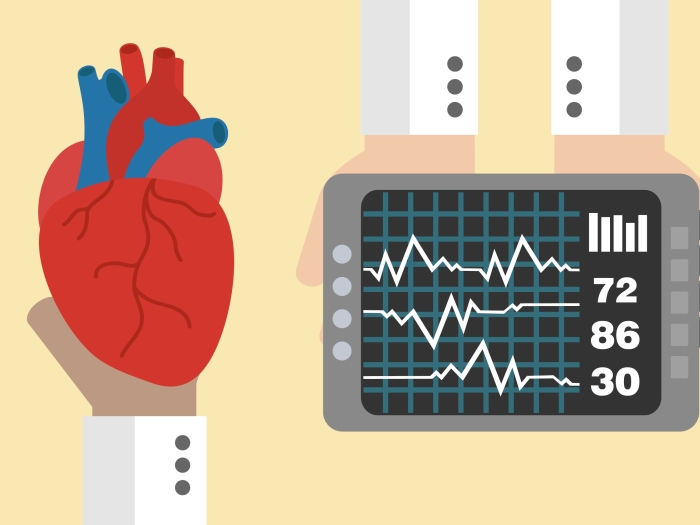How two catheter ablation procedures took Brad Cook from thin ice to back on the rink.
1:00 PM
Author |

Brad Cook was vaguely aware of the fluttering feeling in his heart, but the healthy family man didn't think much about it as he continued his active lifestyle, including his much-loved ice-skating sessions at University of Michigan's Yost Ice Arena.
SEE ALSO: Panic Attack or Heart Attack: How to Tell the Difference
Then one day, while on jury duty, he began feeling faint and was taken to the emergency room. There he was diagnosed with atrial fibrillation (also known as Afib), an irregular heartbeat that affects blood flow to the heart muscle and to the rest of the body, and which can cause blood clots and stroke.
That was in 2011.
Cook, a retired engineer, continued to be monitored by his primary care physician, and took medication for his Afib. His condition was relatively stable, with only periodic episodes of arrhythmia, for the next few years.
Warning signs
Then, in 2014, Cook began experiencing more frequent symptoms. True to his engineering background, he meticulously tracked his symptoms on what he calls his "Afib episode" plot.
His doctor referred him to the U-M Frankel Cardiovascular Center, where cardiologist David Bach, M.D., prescribed another medication. When that failed to control the arrhythmia, Cook was sent to U-M electrophysiologist Hakan Oral, M.D., who monitored him and prescribed a combination of medications that proved to be only partially successful.
By 2015, says Cook, "I was having an episode every two weeks and each one was lasting longer and longer — sometimes 20 hours at a time."
Oral recommended catheter ablation, a minimally invasive technique intended to treat atrial fibrillation without major surgery.
"Dr. Oral said to me, 'You're young and healthy and a good candidate for catheter ablation.' So I decided to try it."

What is catheter ablation?
During catheter ablation, a series of catheters (thin, flexible wires) are put into a blood vessel in the arm, groin or neck, and are guided into the heart through the blood vessel. A special machine sends energy to the heart through one of the catheters to cauterize the "short circuits" in the heart that are generating the atrial fibrillation. The procedure often involves radiofrequency energy to produce heat that destroys tiny areas of heart tissue involved in the abnormal heart rhythm.
The U-M team has had much success with catheter ablation treatment, which has resulted in improved quality of life for patients. For 70 to 75 percent of individuals with paroxysmal atrial fibrillation (the type that comes and goes on its own), Afib is eliminated with a single procedure. When the procedure is repeated in those who still have atrial fibrillation after the first procedure, the overall success rate is approximately 85 to 90 percent.
Armed with this information, Cook says he went into his procedure expecting to have two ablations.
As it turned out, his first ablation in January 2015 did not eliminate the Afib, so another procedure was scheduled for four months later. And that one did the trick, Cook says. "At this point, I am cured. I have no higher probability of having Afib than the general population."
Best of all, the 61-year-old is enjoying a much improved quality of life and is back on the ice, skating his heart out. "I skated 40 times this year at Yost," Cook says proudly.

Explore a variety of healthcare news & stories by visiting the Health Lab home page for more articles.

Department of Communication at Michigan Medicine
Want top health & research news weekly? Sign up for Health Lab’s newsletters today!





